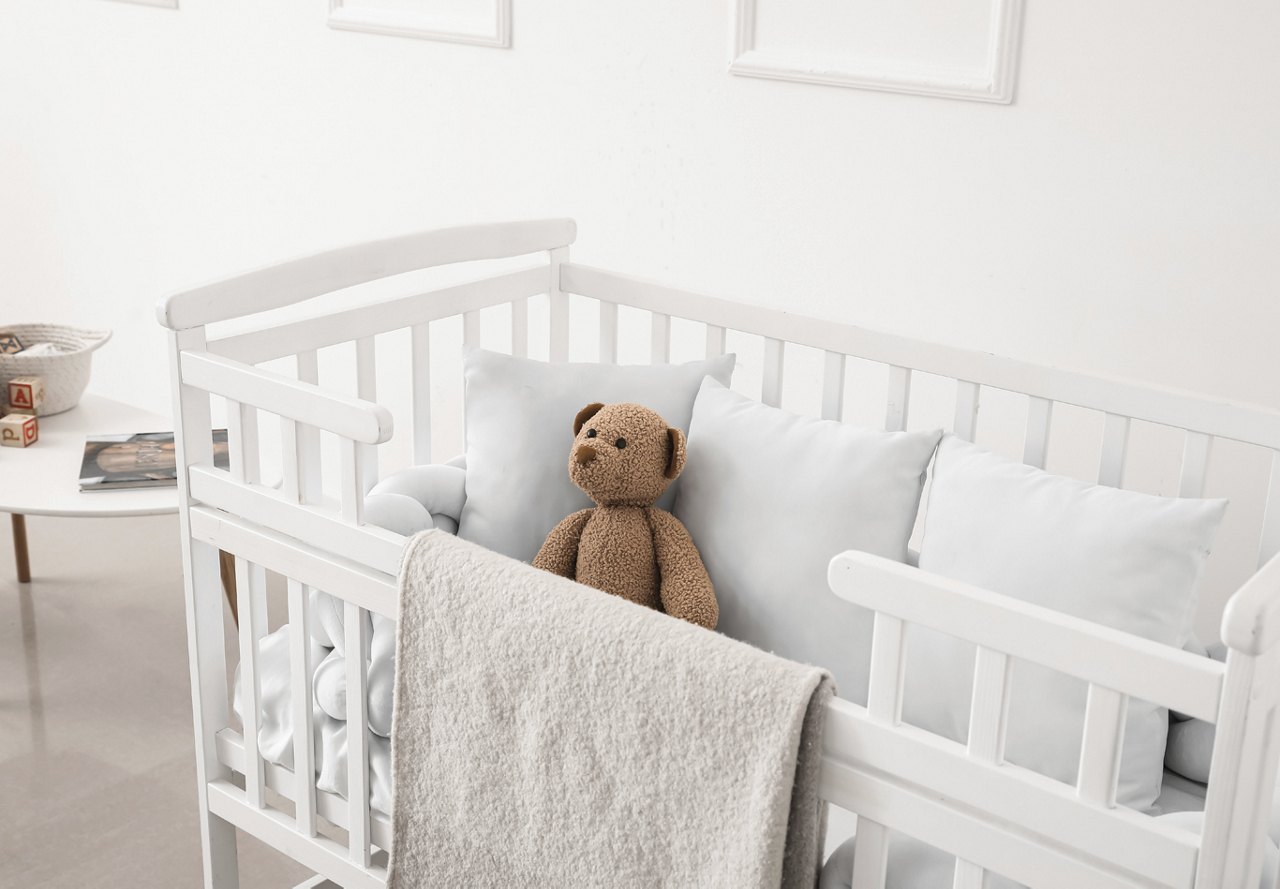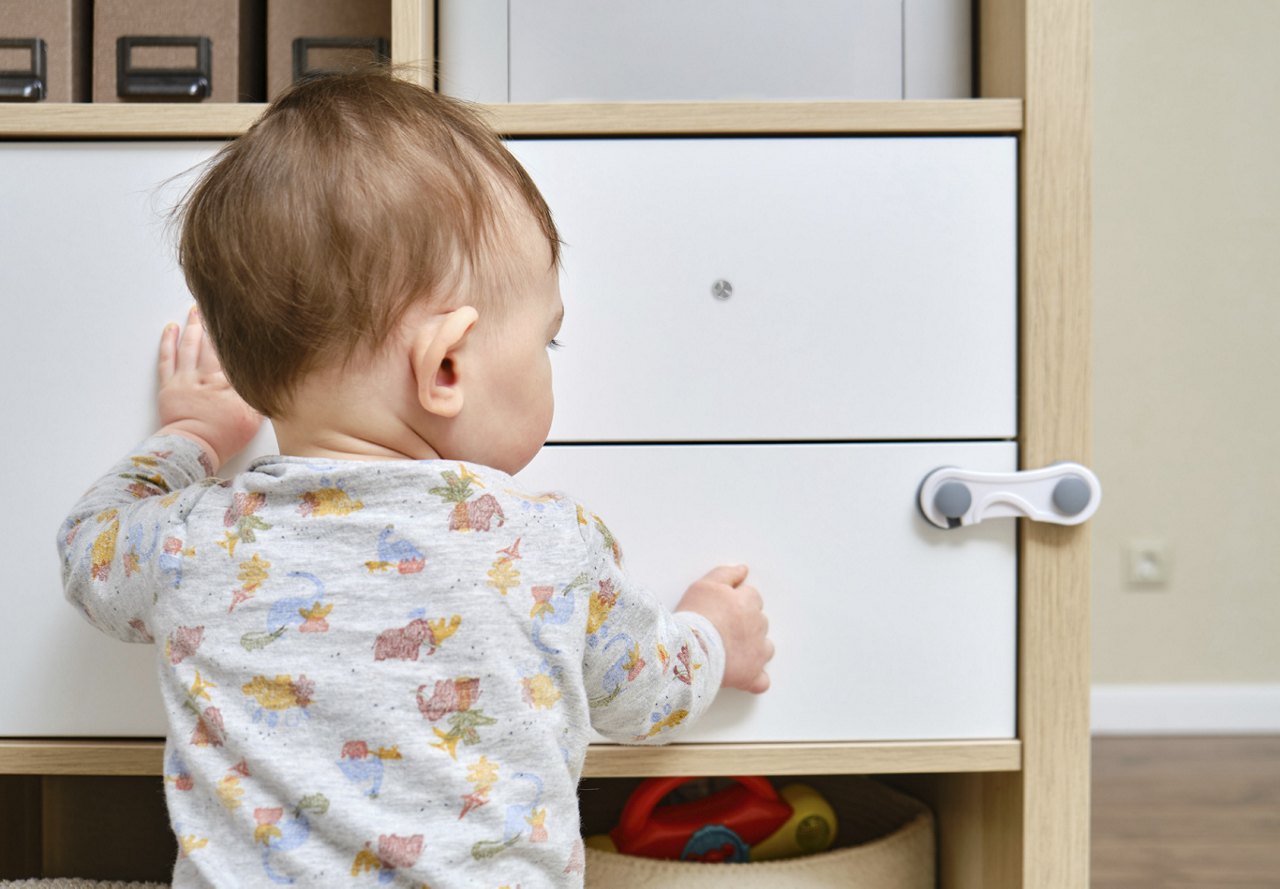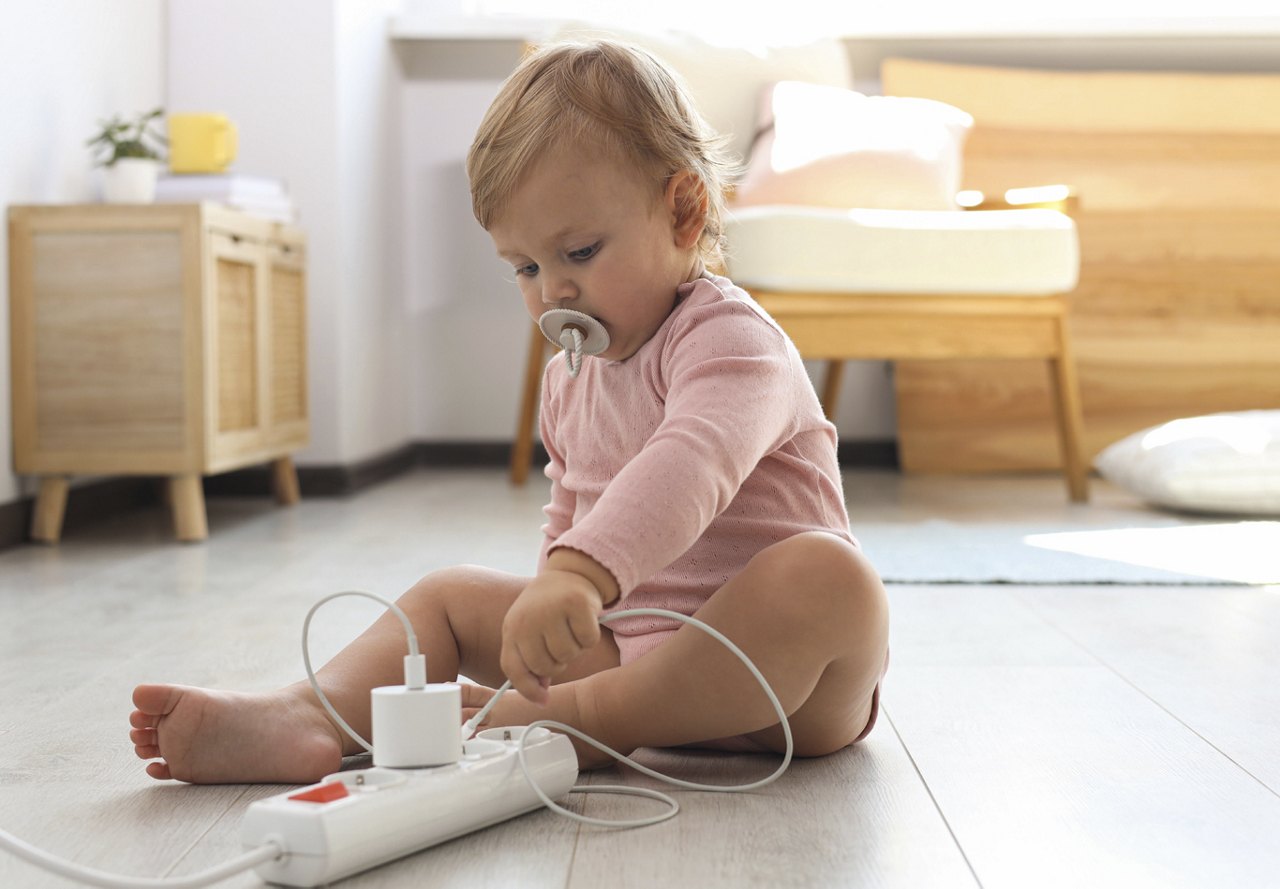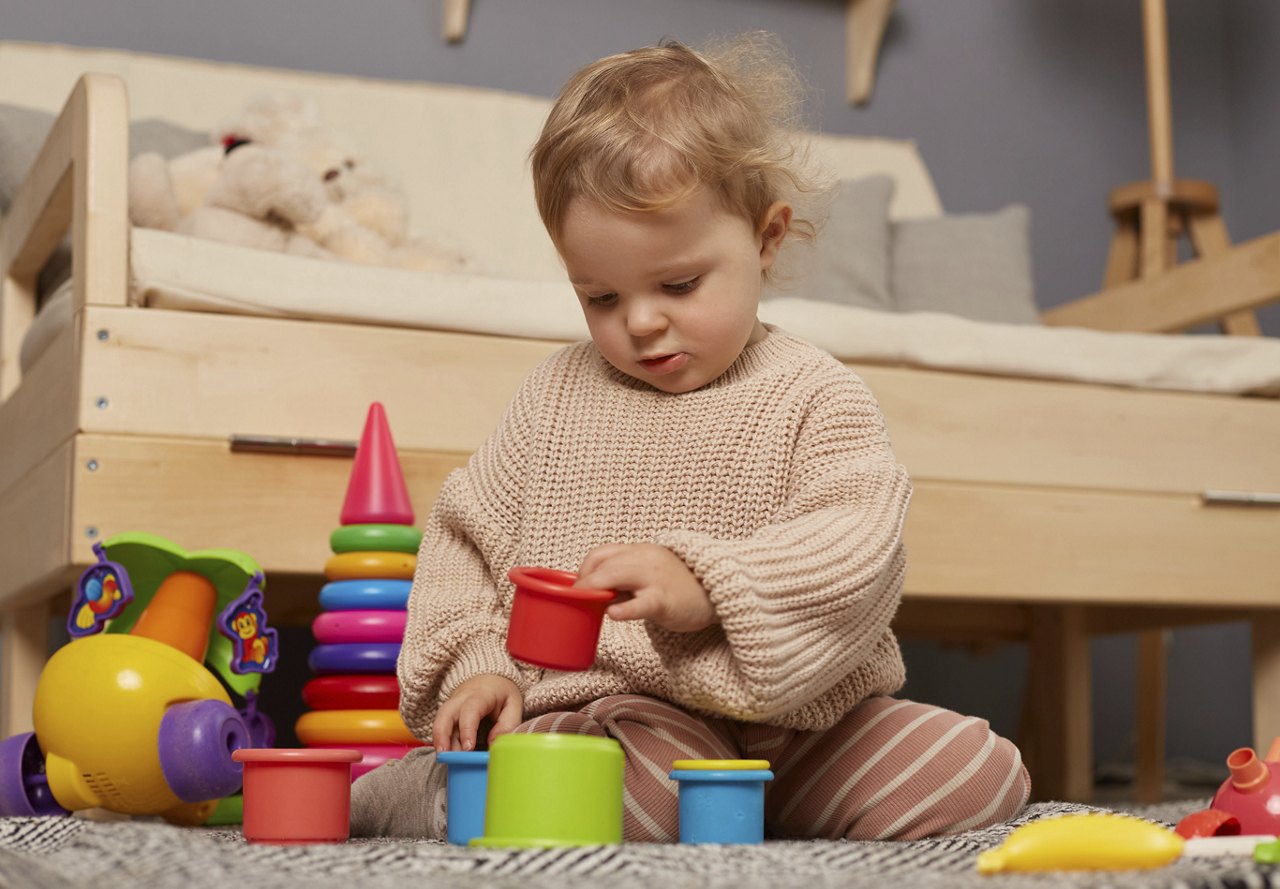Baby Proofing Checklist: How to Baby Proof Your Apartment
Welcoming a newborn into your home is a joyous occasion, yet it comes with its own set of challenges, particularly for expecting parents who reside in an apartment community. The realization of the many living adjustments required to ensure a safe environment for your baby can be overwhelming. Many first-time parents may question the necessity of baby-proofing their living space prior to the arrival of their newborn. However, it is crucial not to underestimate the significance of a baby-proof apartment. By adhering to these guidelines, you can establish a secure and nurturing environment for your little one, ensuring peace of mind as you embark on this new chapter of parenthood. Make raising a baby in an apartment a little less stressful with the following baby-proofing checklist.
Renter-Friendly Baby Proofing
When you live in an apartment, you’ll want to be cognizant of potential damage to your rental created by baby-proofing aids. Some of these aids require drilling, could leave sticky residue, or may not be allowed by your apartment building in general. We encourage you to speak to your landlord about child proofing options and possibly DIYing or paying for repairs when you move out or no longer need your baby-proofing tools.
How to Baby Proof Your Apartment
Modify the Crib as Needed
Parents should adjust the crib's configuration to suit their child's developmental stage. Initially, for newborns, position the crib mattress at its highest setting for ease of access and care. As the infant progresses in age and mobility, you’ll need to lower the mattress height to reduce the risk of falls. It’s also important to maintain a clutter-free sleeping environment by refraining from placing items such as blankets and pillows within the crib, as these can present significant suffocation hazards.
Be Cautious with Electricity
The importance of exercising caution with electricity, particularly in households with crawling infants, cannot be overstated. As babies develop and begin to explore their surroundings, electrical outlets often capture their curiosity, presenting a significant safety risk if not adequately baby-proofed. Consequently, parents should use electrical outlet covers that are designed to fit securely and resist removal by small hands. Although individual outlet covers might appear to be a convenient and straightforward solution, they pose a potential choking hazard should they become dislodged. Therefore, ensuring that electrical outlets are properly protected is essential in maintaining a safe environment for children.Don’t Forget About Window Blinds
Window blind cords pose a significant risk to young children due to their natural curiosity and tendency to explore their environment. Not to mention, children often have a fascination with placing objects around their necks. These cords can easily become entangled around a child's neck, leading to potential strangulation hazards. With this in mind, parents need to take precautions to ensure their safety, including keeping blind cords out of their reach. Inspect all window blinds and replace any corded coverings with safer options, such as cordless or inaccessible cords. When it comes to renter-friendly baby-proofing, you can also purchase cord safety wraps that provide a quick and temporary solution to keep these dangerous cords out of reach.Keep Small Objects Out of Reach
Secure small objects that could potentially pose a choking hazard. This is especially important in environments where older children are present, as their toys or other small items may inadvertently become accessible to younger siblings. You can also install renter-friendly baby gates to separate your infant from designated play spaces and toys. Unlike traditional baby gates that need to be screwed into the wall, these renter-friendly options often use tension to keep them in place. A practical guideline to determine the risk of an object is its ability to fit within a standard toilet paper tube; any item meeting this criterion should be considered hazardous. It is imperative to conduct a thorough inspection of all living spaces to identify such risks and to implement secure storage solutions that place these items beyond the reach of young children.
Install Gates Where Necessary
You’ll need to install safety gates in areas that may pose potential hazards. These gates should be strategically placed at the top of stairways and in front of doors leading to potentially dangerous zones. Keep in mind that gates blocking stairways should always be screwed into the wall, as tension-mounted gates can inadvertently be pushed through. It is advisable to implement these safety measures when the child reaches approximately six months of age, as this is typically when infants begin to exhibit increased mobility, such as rolling and crawling. Regular inspections of the gates are essential to confirm their stability and effectiveness in safeguarding the child.Limit Access to Certain Rooms
To block off entire rooms, you can get door knob covers for round door knobs or door lever locks for lever-style door handles. The round door knob covers twist freely over the door knob so your child won’t be able to grip and turn the handle while the door lever lock affixes to your door and prevents the lever from being pulled downwards.Safely Store Hazardous Products
To reduce the risk of accidental poisoning incidents among children, you’ll need to implement stringent safety measures concerning the storage of cleaning products and medications. Ensuring that these potentially hazardous items are securely locked in cabinets or placed on elevated shelves can effectively prevent access by inquisitive young children. If you’re storing medications or cleaning supplies in an accessible area, there are several ways to baby-proof drawers without drilling to ensure your child cannot access these products and you do not damage your rental property.
Cover Any Sharp Corners
Position yourself at the eye level of an infant and examine your apartment. Doing so will help you identify risky edges like table corners. To reduce the risk of injuries from sharp edges, use corner guards on tables and similar surfaces.Prevent Falling from Windows
If you live in an apartment building, there’s a high likelihood you aren’t on the first floor. Oftentimes, high-rise buildings already have safety measures in place, where windows don’t open more than a certain amount. If your building doesn’t have this feature, you can purchase window guards or window stops that can be drilled into the window frame. You can also move furniture away from windows to prevent climbing.Create a Secure Play Space
When engaged in tasks that require your full attention, such as cooking, the presence of a crawling baby may present potential hazards. Keeping your baby occupied with toys and stimulation is a great way to ensure you can focus your attention elsewhere. However, leaving your baby unattended comes with its own risks if you haven’t done your due diligence to secure their play area. Opt for toys that incorporate features such as lights, sounds, and adjustable height settings, which are instrumental in stimulating your baby's senses and accommodating their developmental growth. Be sure to remove any toys that could be a choking hazard. You’ll want to use baby gates, outlet covers, and corner guards in this area to protect your child from additional hazards.
Raise Your Family in a Greystar Apartment
Transforming your home into a safe haven for your little one is an essential undertaking that requires careful planning and execution. From modifying the crib to securing electrical outlets, each precautionary measure you implement contributes to your peace of mind and the safety of your newborn. As you prepare to navigate the challenges of apartment living with a growing family, approach the process with creativity and a positive mindset.When it comes to raising your baby in a safe environment, Greystar apartments are a great place to call home. If you’re looking for your first family home, raise your little one with Greystar! Browse the Greystar apartment communities in your area.
The information presented on or through this Website is made available solely for general information purposes. We do not warrant the accuracy, completeness, or usefulness of this information. Any reliance you place on such information is strictly at your own risk. We disclaim all liability and responsibility arising from any reliance placed on such materials by you or any other visitor to this Website, or by anyone who may be informed of any of its contents. Any reference to amenities, services, rules, policies, or procedures at a Greystar apartment community is general in nature, and each Greystar apartment community may have amenities, services, rules, policies, and procedures that differ from those referenced on this Website. Please consult with your Greystar apartment community for the exact amenities, services, rules, policies, or procedures applicable.
This Website may include content provided by third parties, including materials provided by other users, bloggers, and third-party licensors, syndicators, aggregators, and/or reporting services. All statements and/or opinions expressed in these materials, and all articles and responses to questions and other content, other than the content provided by Greystar, are solely the opinions and the responsibility of the person or entity providing those materials. These materials do not necessarily reflect the opinion of Greystar. We are not responsible, or liable to you or any third party, for the content or accuracy of any materials provided by any third parties.







